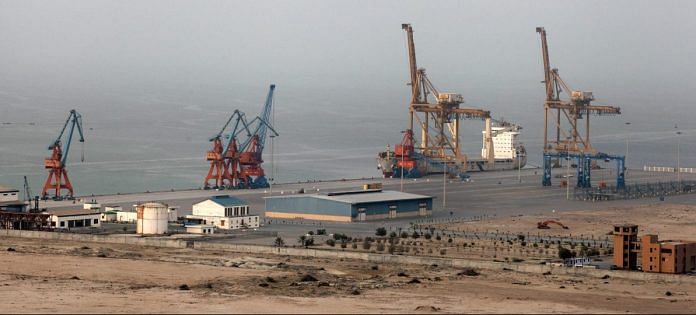Web delays are hitting business at the port, which is a geopolitical tension point with India.
A port in Pakistan’s Gwadar is a linchpin in China’s plan to revive the old Silk Road linking Asia to Europe and Africa, but a slow Internet line is causing it to lose business.
The customs authority’s failure to fully address issues with Internet speed and reliability has meant the port, operated by a Chinese state-owned company, is functioning at less than capacity, Dostain Khan Jamaldini, chairman of the Gwadar Port Authority, said in an interview.
“About four cargoes of sea food go daily from here to Karachi,” Jamaldini said, referring to the jetty next to the port where customs clearance is done manually. “We are not proactive, we are reactive. It’s a systematic flaw.”
The deep-sea port in Pakistan represents a geopolitical tension point with neighboring arch-rival India, which is financing an Iranian port about 76 nautical miles away. India sent its first wheat consignment to Afghanistan through Iran’s Chabahar port in October.
Bandwidth Issues
The customs authority’s online system is riddled by delays due to a slow internet connection and an alternative wireless system installed by the Chinese too is facing bandwidth problems, according to Jamaldini.
Pakistan’s Federal Board of Revenue Member Customs, Muhammad Zahid, wasn’t available for comment. Jamaldini feels time is of essence, as Gwadar is better positioned geographically and economically for trade with Afghanistan .
“Chabahar port does not have that potential, the route is longer and more expensive,” he said, adding “state policy can force traders temporarily but not forever, they will work where they make more money.”
What used to be a small fishing town on the southwestern corner of Pakistan is giving way for construction of roads and buildings to house banks, insurance and clearing agents. China Overseas Port Holdings, the port’s operator, has separately spent $250 million to add five new cranes, construct a building in less than six months by importing ready made parts and create space for a free zone.
Five manufacturers have signed agreements to build factories at the economic free zone, including for electric motorcycles, edible oil and a fish processing plant, said Jamaldini.
China is making a big bet on Pakistan and Beijing’s financing has brought power plants and infrastructure projects valued at about $60 billion. The nation’s economic growth rose to the highest in more than a decade and power blackouts have been curbed, helping trigger a wave of expansion in cement and steel companies.
However, the increased imports has also lead to Pakistan’s current financial deterioration, with a current-account deficit that has increased by 45 per cent to $16 billion in eleven months ended May. There are also concerns over the viability of the port itself.
Gwadar “can potentially serve a role to provide additional port capacity for Pakistan itself, for Afghanistan, as a complement and trans-shipment hub for Chabahar, as a location for the Chinese to ship materials and so on,” said Andrew Small, a senior fellow at the German Marshall Fund of the United States and an author of a book on China-Pakistan relations. It “isn’t really envisaged as the beginning or end of a transit route for China.” – Bloomberg



